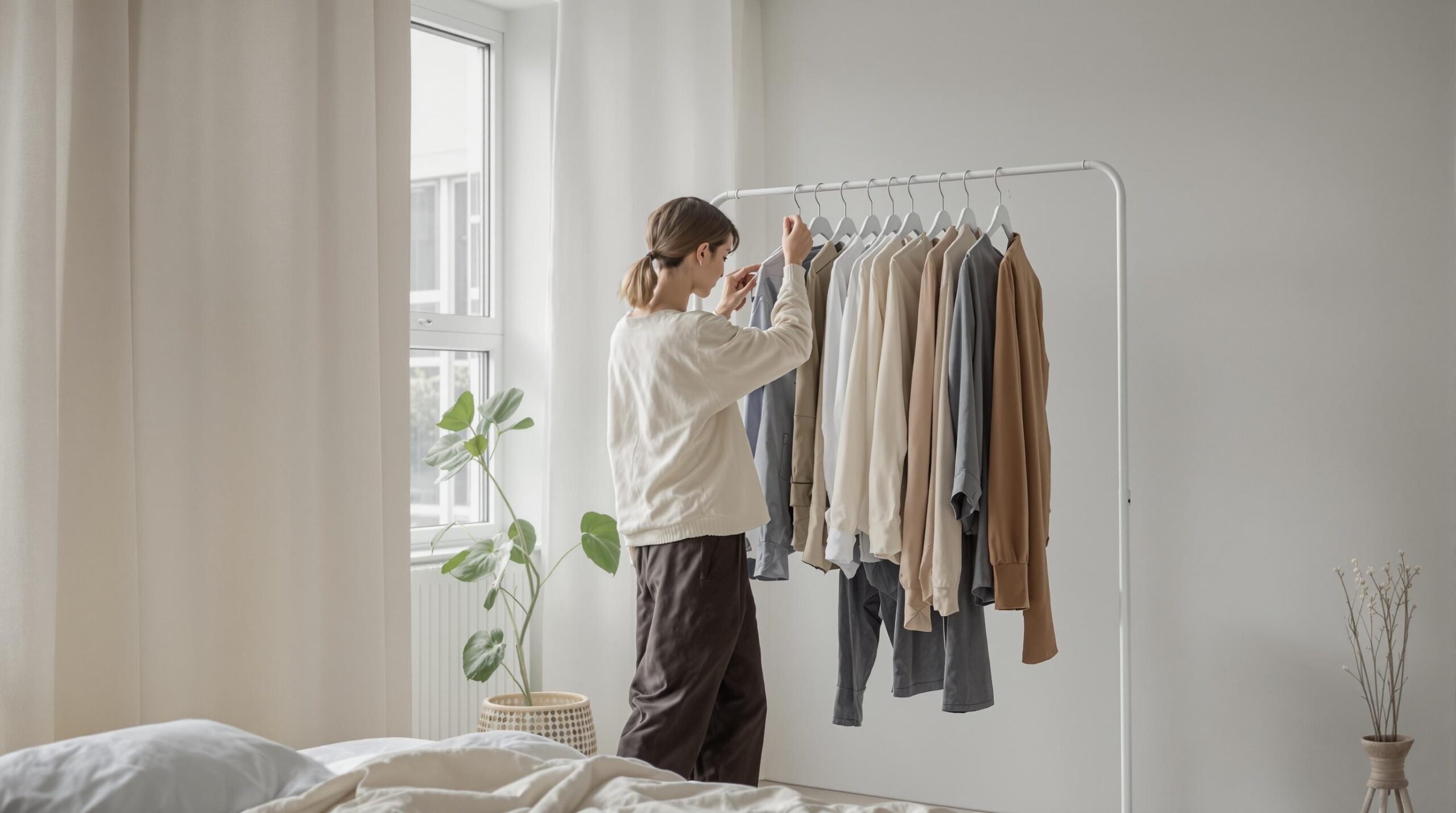Minimalist wardrobes have gained popularity in recent years, focusing on simplicity and functionality. By choosing quality over quantity, individuals simplify clothing choices and reduce waste. This movement is causing significant shifts in personal-style economies.
Understanding Minimalist Wardrobes
A minimalist wardrobe typically consists of versatile, high-quality pieces that complement each other. The aim is to create a cohesive collection that simplifies dressing. This approach encourages individuals to focus on timeless and classic styles rather than fleeting trends. People save time and reduce decision fatigue with a smaller, more thoughtful wardrobe.
Origins of the Minimalist Movement
Minimalism began as an art movement in the 1960s, promoting simplicity in design. Over time, it has expanded into lifestyle and fashion domains. The minimalist wardrobe concept arose from a need for sustainable and ethical fashion choices. As the fast fashion industry contributed to environmental concerns, minimalism offered an alternative.
Economic Impact of Minimalist Wardrobes
Minimalist wardrobes are transforming the way people spend money on clothing. Individuals often pay more per item by focusing on quality but purchase fewer items overall. This shift reduces unnecessary spending and promotes investment in longer-lasting pieces. As a result, people experience more satisfaction and less financial strain associated with clothing purchases.
Shifting Fashion Industry Trends
The rise of minimalist wardrobes has influenced more significant fashion industry trends. With increasing awareness around sustainability, brands are adapting to meet consumer demands for higher quality and ethical practices. Many companies now prioritize sustainable materials and fair labor practices, reflecting the minimalist ethos. This shift encourages more brands to offer timeless designs and abandon fast fashion practices.
Environmental and Ethical Considerations
Minimalist wardrobes contribute positively to the environmental and ethical aspects of the fashion industry. Individuals minimize the ecological footprint associated with clothing production by valuing high-quality and sustainable pieces. This practice reduces waste, curbs pollution, and conserves resources like water and energy.
Encouraging Sustainable Practices
Adopting a minimalist wardrobe encourages individuals to support brands prioritizing ethical production methods. As consumers demand more accountability, brands strive to offer transparency in their supply chains. This transformation benefits both the environment and workers in the fashion industry.
Psychological Benefits of Minimalist Wardrobes
Beyond economic and environmental impacts, minimalist wardrobes offer psychological benefits. With fewer clothing options, individuals experience reduced decision-making stress. This simplification can lead to increased mental clarity and focus.
Boosting Confidence and Personal Style
Having a curated wardrobe of favorite pieces can boost confidence and personal style. People who love each item in their wardrobe are more likely to feel good about their appearance. This confidence can positively influence other areas of life, including professional and personal relationships.
Embracing Minimalist Wardrobes
While transitioning to a minimalist wardrobe may seem daunting, the process can be rewarding. Starting with decluttering and assessing current clothing is a practical first step. Identifying favorite and versatile pieces allows for easier decision-making in the future.
Steps to Build a Minimalist Wardrobe
Creating a minimalist wardrobe involves strategic selection and a commitment to quality. Begin by focusing on essential items that suit individual lifestyles. Additionally, prioritize pieces that can be mixed and matched to create various outfits. This approach increases the wardrobe’s functionality without needing many clothes.
Transitioning with Purpose
Transitioning to a minimalist wardrobe requires thoughtful planning and patience. Evaluate clothing needs based on climate, work requirements, and personal preference. Gradually replace worn or less-used items with versatile and high-quality staples. This thoughtful approach ensures a smooth transition while avoiding unnecessary purchases.
Challenges and Misconceptions
While there are many benefits to minimalist wardrobes, challenges and misconceptions exist. Some perceive minimalism as restrictive, fearing it limits personal expression. However, thoughtful choices allow for diverse personal styles within the minimalist framework.
Overcoming Challenges
To overcome challenges, focus on building a wardrobe reflecting personal taste and lifestyle. Select versatile pieces that can be styled differently. Educating oneself on minimalist values will ensure alignment with individual beliefs and preferences.
Dispelling Misconceptions
Address misconceptions by highlighting creativity within limitations. Minimalist wardrobes do not require strict adherence to specific items. Instead, they support individual expression within a curated and customized framework. Personal style thrives within minimalism’s boundaries by focusing on quality and versatility.
Future of Minimalist Wardrobes
The future of minimalist wardrobes seems promising as more people recognize the value of simplicity and sustainability. This trend will likely continue impacting fashion industry practices and personal style economies.
Embracing a Transformative Trend
As minimalism becomes mainstream, people will find innovative ways to express personal styles through limited selections. Companies will adapt, offering more sustainable, high-quality products to meet consumer demands. This transformation could help redefine fashion norms and integrate minimalism into daily life.
Conclusion
Minimalist wardrobes are more than just a fashion trend; they are transformative forces reshaping personal style economies. By focusing on quality, sustainability, and ethical practices, minimalists contribute to positive social and environmental change. Despite challenges and misconceptions, minimalist wardrobes offer lasting benefits for individuals and society. Embracing this approach could lead to a more sustainable and mindful existence.

